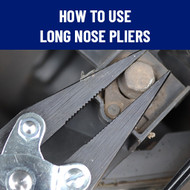How To Use Long Nose Pliers
30th Oct 2025
Long nose pliers have elongated jaws that make them perfect for working with delicate objects or in tight spaces.
But what’s the best way to use them?
In this guide, we’ll go over our top tips:
How To Use (Basic Intro)
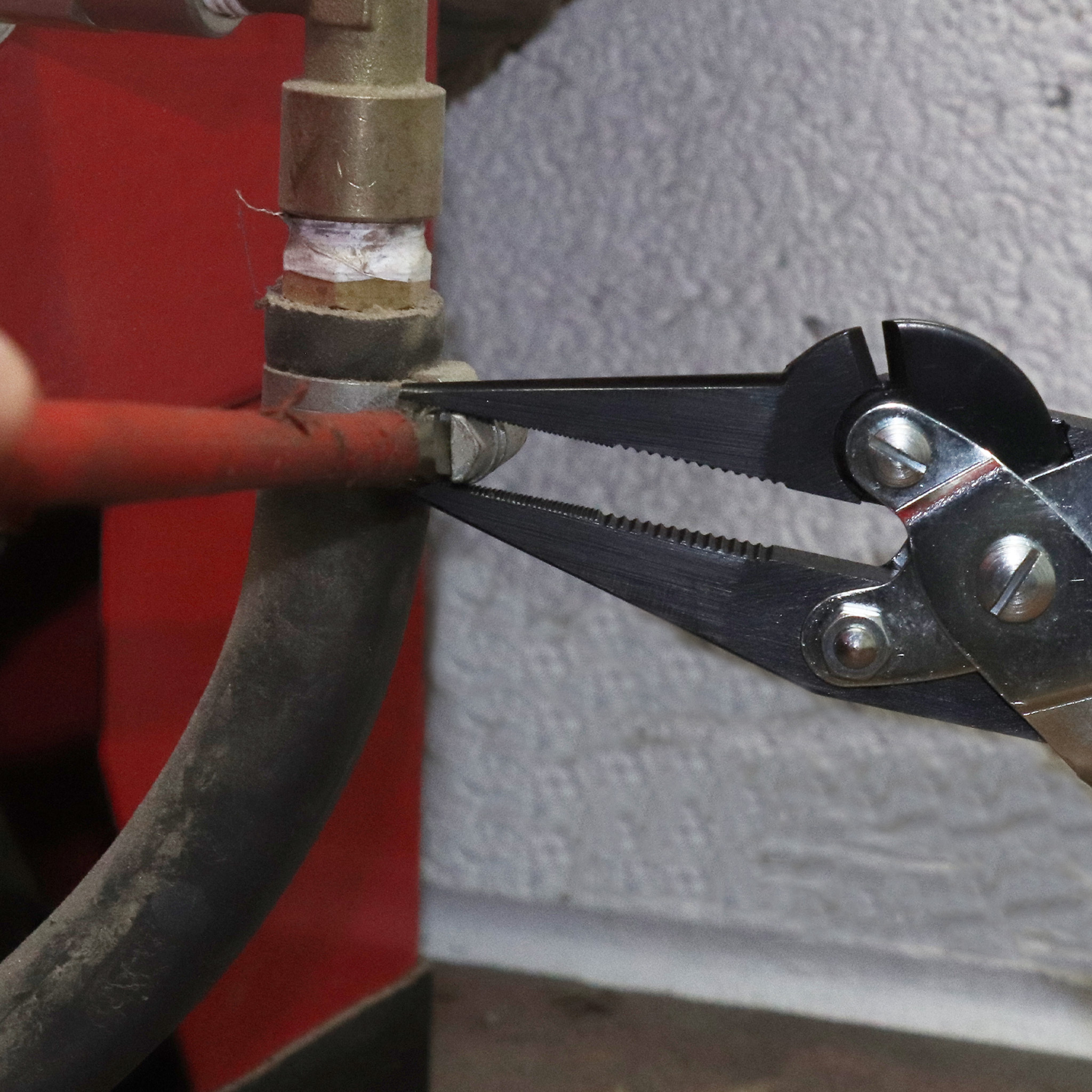
Long nose pliers are used to grip, bend, and cut wire and other objects in tight spaces. Their narrow, pointed tips give you more precision than traditional pliers.
You use them just like normal pliers:
- Hold them in your hand, with your thumb on one handle, and the rest of your fingers on the other.
- Open them using your fingers, and place the jaws around the object you want to grip.
- Apply pressure on both handles to grip, then move or bend the object as required.
- If cutting, do the same as above but place the object inside the cutting jaws, and apply firm pressure until the cut is made.
Always apply even pressure and avoid excessive force to prevent damage.
To do this safely, make sure to:
- Wear eye protection – this will protect you against any flying offcuts.
- Ensure electrical circuits are disconnected – never use pliers on live wires.
- Keep a clean line of sight to the tips of the pliers (if possible).
Are Parallel-Jaw Long Nose Pliers Better?
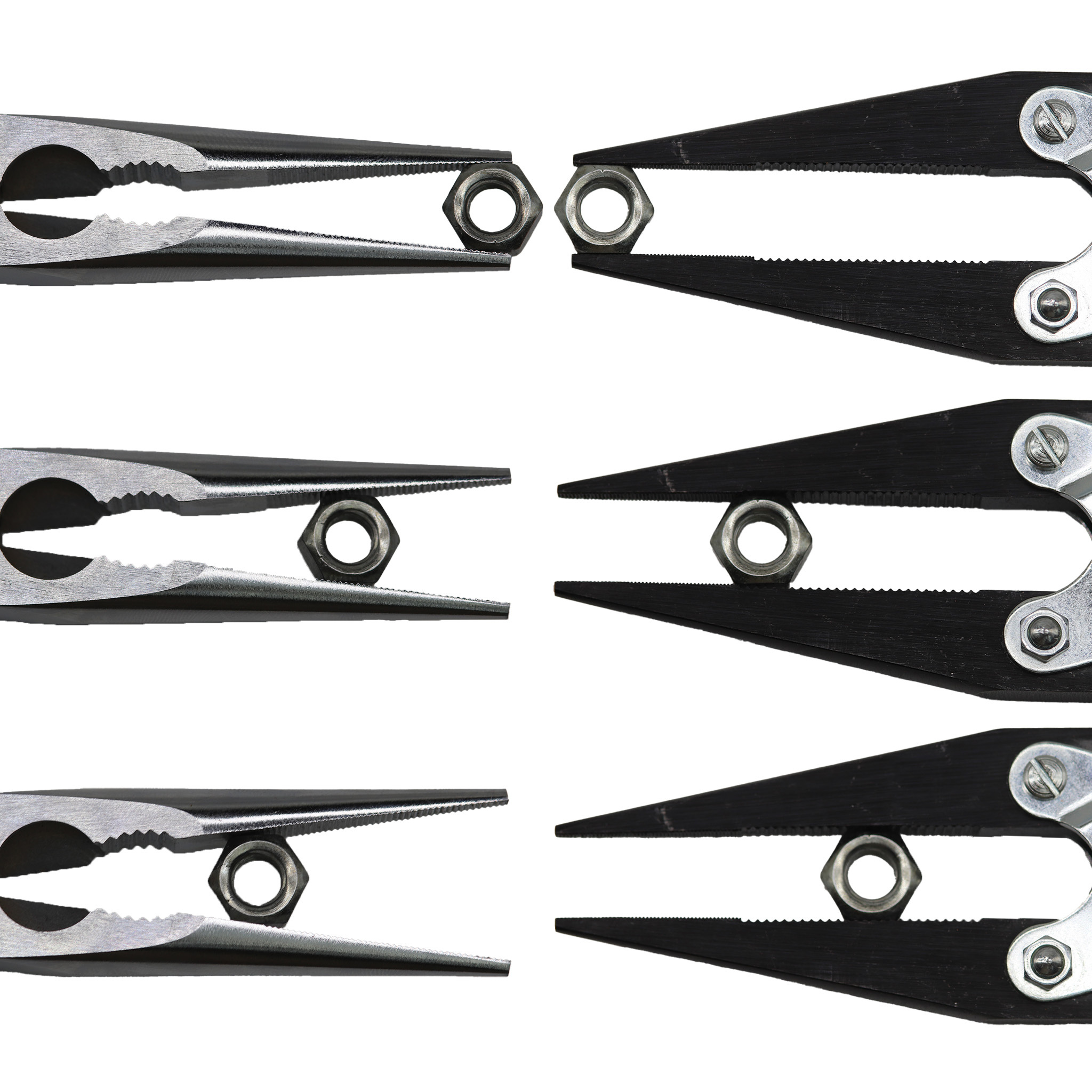
Yes, in a lot of cases the parallel-jaw mechanism is better than a traditional scissor-type action:
- Even grip force: traditional pliers create uneven force on the object, which can damage things like wire insulation or delicate/soft materials, whereas parallel-jaw pliers apply even pressure across the whole object.
- Less slippage: parallel-jaws create a greater contact surface area with the object you’re trying to grip, which means you need less force to achieve the grip, and are less likely to slip while holding the object.
- Grip round objects: parallel-jaws offer a directly opposing force, so you can grip round objects without them slipping out of the top of the pliers.
- Minimal jaw spread: scissor-action pliers splay outwards from the object, which means your pliers will take up more width within a compartment/area than the object itself. Whereas the parallel-jaws close around the object evenly, so they take up less space.
If you’re interested in learning more, you can view the Maun range of long nose parallel pliers here.
Different Ways to Grip Long Nose Pliers

You can use different grip techniques for different jobs:
- Firm Precision Grip - Hold the handles lightly, like a pen, with your thumb on one side and fingers on the other. Best for gripping small objects like screws or tiny electronic components.
- Rolling Motion Grip - Instead of a firm squeeze, apply pressure gradually while rolling your wrist. This technique is perfect for bending wire or shaping soft metals without causing stress fractures.
- Power Grip - When force is needed, move your fingers closer to the pivot for maximum leverage. This works best when trying to twist a stubborn wire or pull something free from a tight space.
This is especially important when working over longer periods, as it will reduce hand fatigue.
How are Long Nose Pliers Used?
Electricians
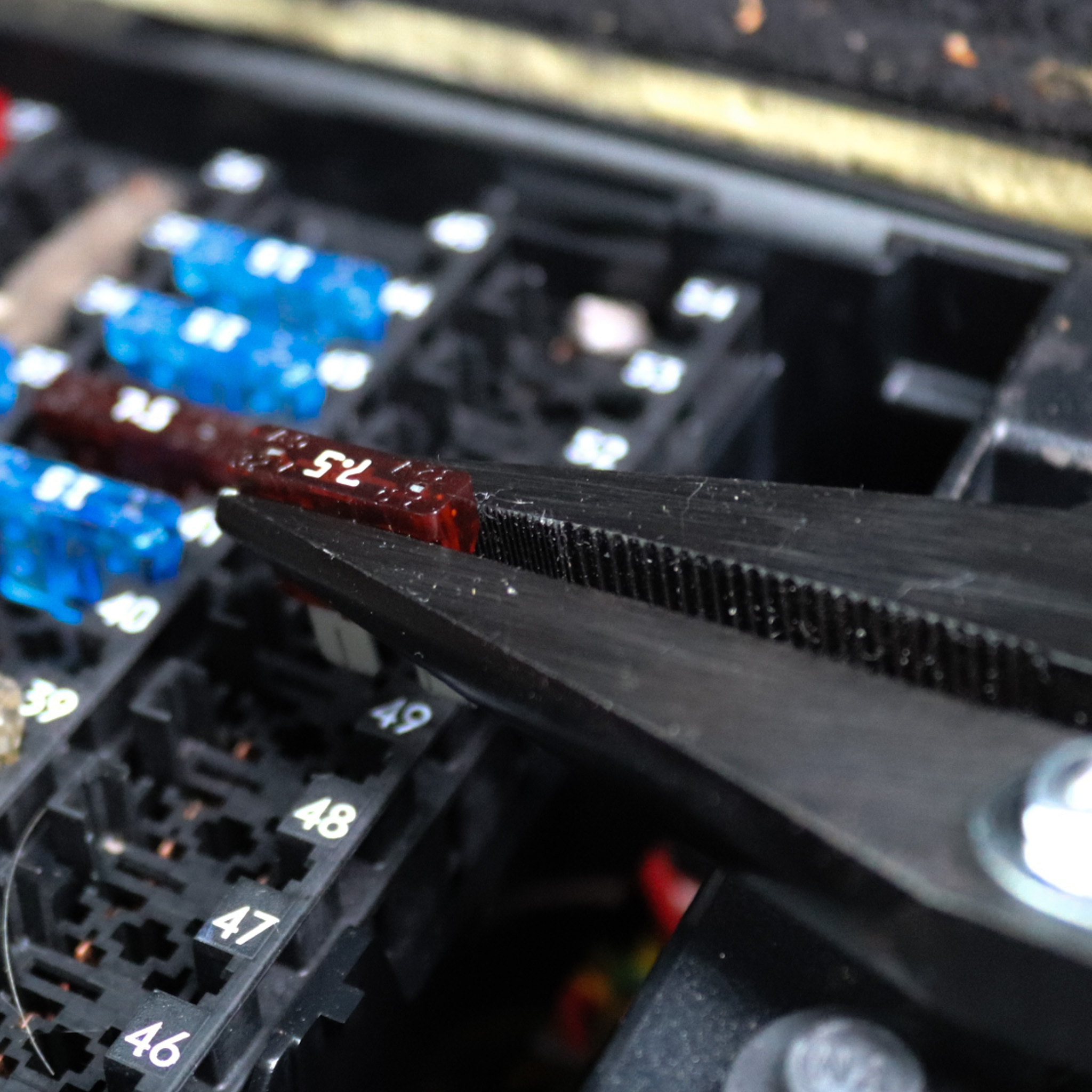
For electricians, these pliers are perfect for:
- Junction box wire management
- Terminal block connections
- Circuit board component removal
- Cable routing in confined spaces
The slim profile allows you to reach into cramped electrical boxes or behind outlets. You can also use the cutting jaws to remove insulation from electrical wire.
Jewellery & Crafting
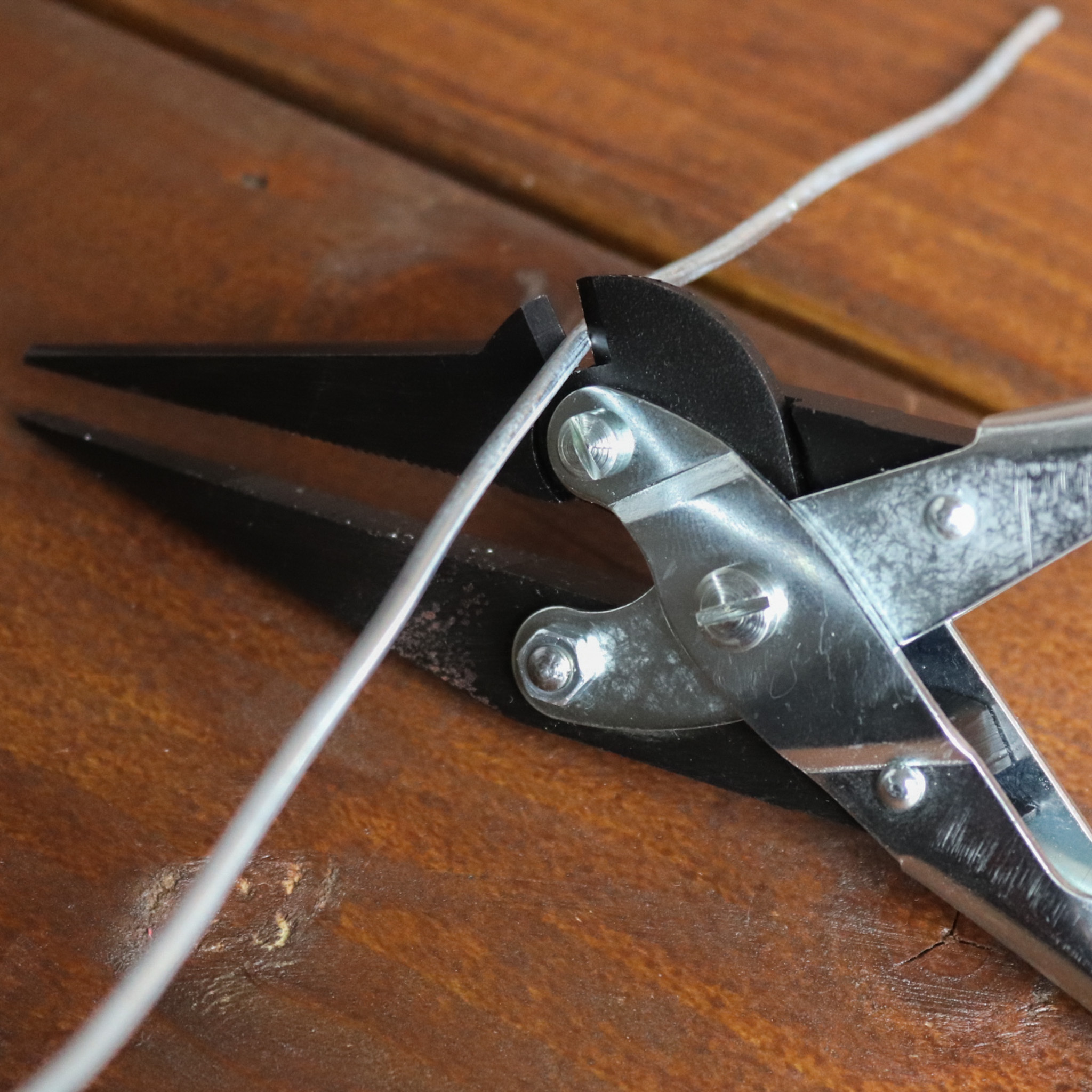
For crafting and jewellery work, you can use them for:
- Opening and closing jump rings.
- Bending wire with more accuracy.
- Chain link repairs.
- Holding delicate objects together.
- Modifying clasps.
DIY

There are plenty of DIY tasks these pliers are great for:
- Removing small nails or staples in awkward places.
- Reaching inside tight spaces (such as when repairing appliances).
- Unscrewing the drain connector from your sink.
- Bending and cutting wire.
- Holding small objects.
Automotive
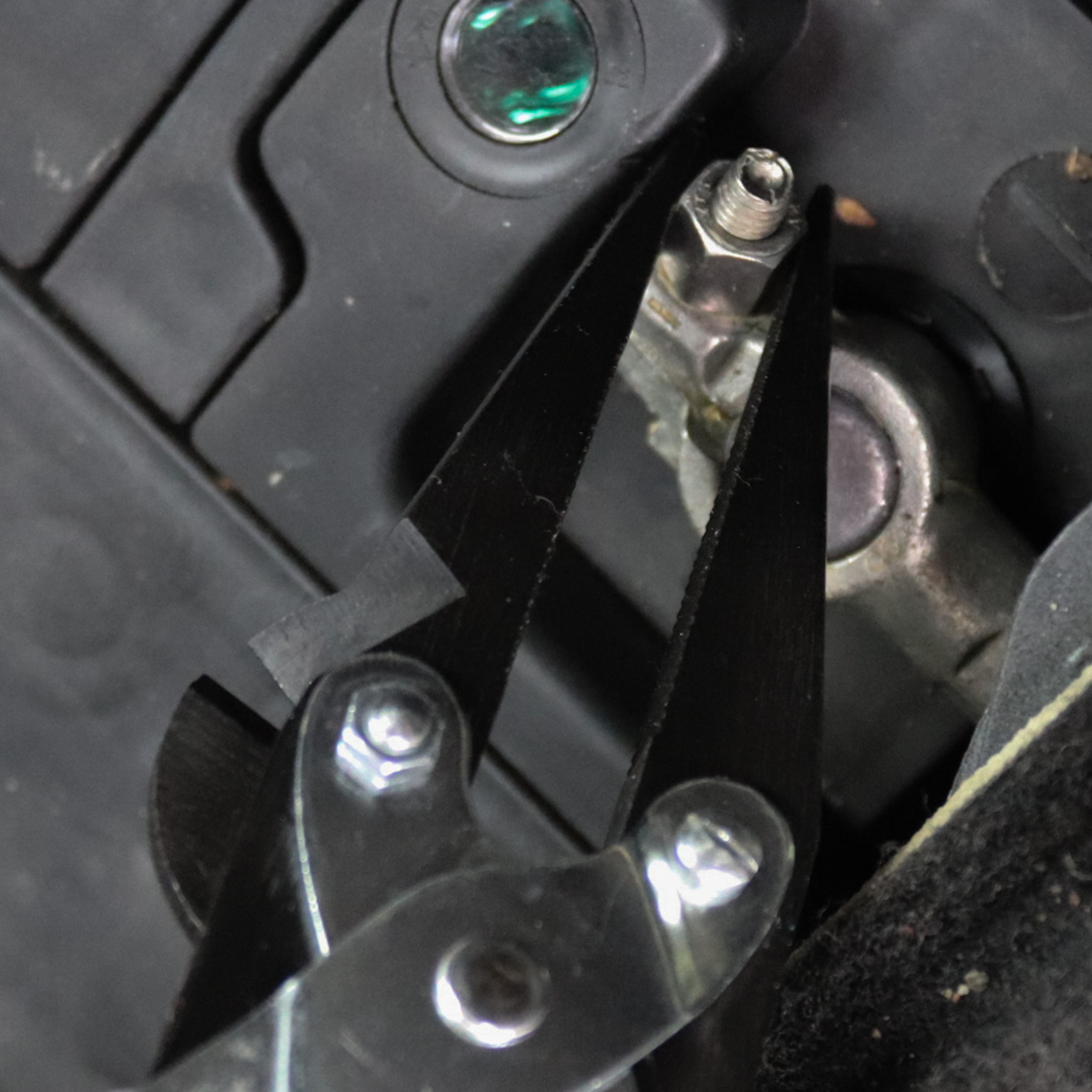
Here are how these pliers are used in the automotive industry:
- Extracting fuses from tight fuse boxes.
- Reaching into engine compartments to tighten bolts or retrieve objects.
- Route wires through firewalls.
- Manipulate spring clips.
Final Summary
That’s everything you need to know about using long nose pliers.
If you have any feedback or improvements you’d recommend for this post, we’d love to hear from you.
This post was brought to you by Maun, experts in tools since 1944.
Scroll back up to re-read any key points, browse our related pages below, or contact us with any questions:

